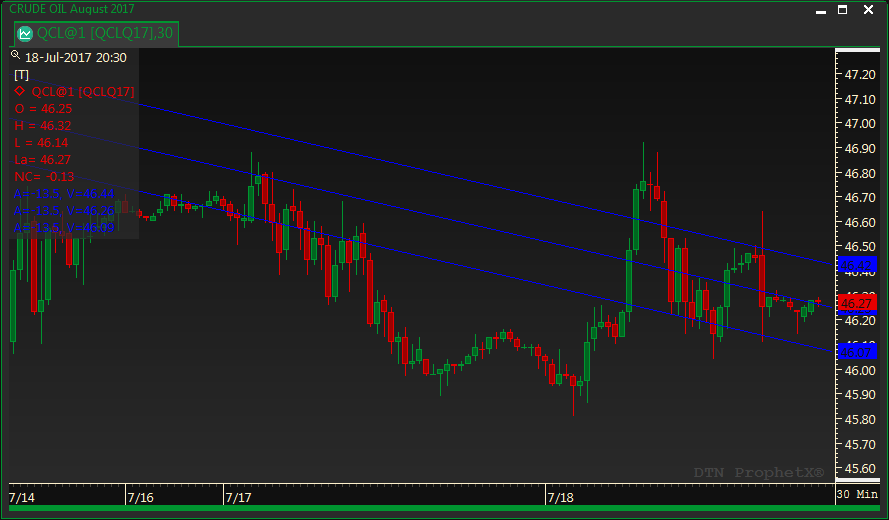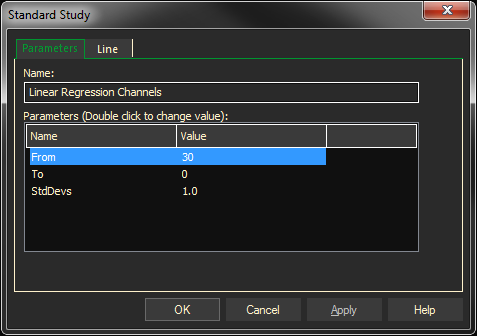In addition to identifying trends and trend direction, the use of standard deviation gives traders ideas as to when prices are becoming overbought or oversold relative to the long term trend.
A Linear Regression Channel consists of three parts:
- Linear Regression Line: A line that best fits all the data points of interest.
- Upper Channel Line: A line that runs parallel to the Linear Regression Line and is usually one to two standard deviations above the Linear Regression Line
- Lower Channel Line: this line runs parallel to the Linear Regression Line and is usually one to two standard deviations below the Linear Regression Line.

The upper and lower channel lines contain between themselves either 68% of all prices (if 1 standard deviation is used) or 95% of all prices (if 2 standard deviations are used). When prices break outside of the channels, either:
- Buy or sell opportunities are present.
- Or the prior trend could be ending.
Adding the Linear Regression Channels to a Chart
- Click on the f(x) Studies docked pane window.
- Click on the plus sign to expand the fx Standard.
- Find the Linear Regression Channels, drag and drop it on the chart
Or
- Right-Click on a blank part of the chart and select ADD STUDY.
- The Add Study dialog box will open.
- Under Data Source, you will find a list of charts and studies in the window. Select the one on which you want the new study to be based.
- Under Studies, select the study you want to add to the window. The library of studies will include standard ProphetX studies plus those that you have created. The Most Recent will include studies that you have previously used.
- Under Add To, select the stack you want to add the study to, or select <New Stack> to create a new stack for the study.
- Click OK to exit.
To Change the study Properties:
- Right click on the line and select Linear Regression Channels Properties
- From and To enters indicate the starting and ending boundaries of an x,y pair data set.
- Std Dev specifies the number of standard deviations away from the central line to draw parallel channel lines.
